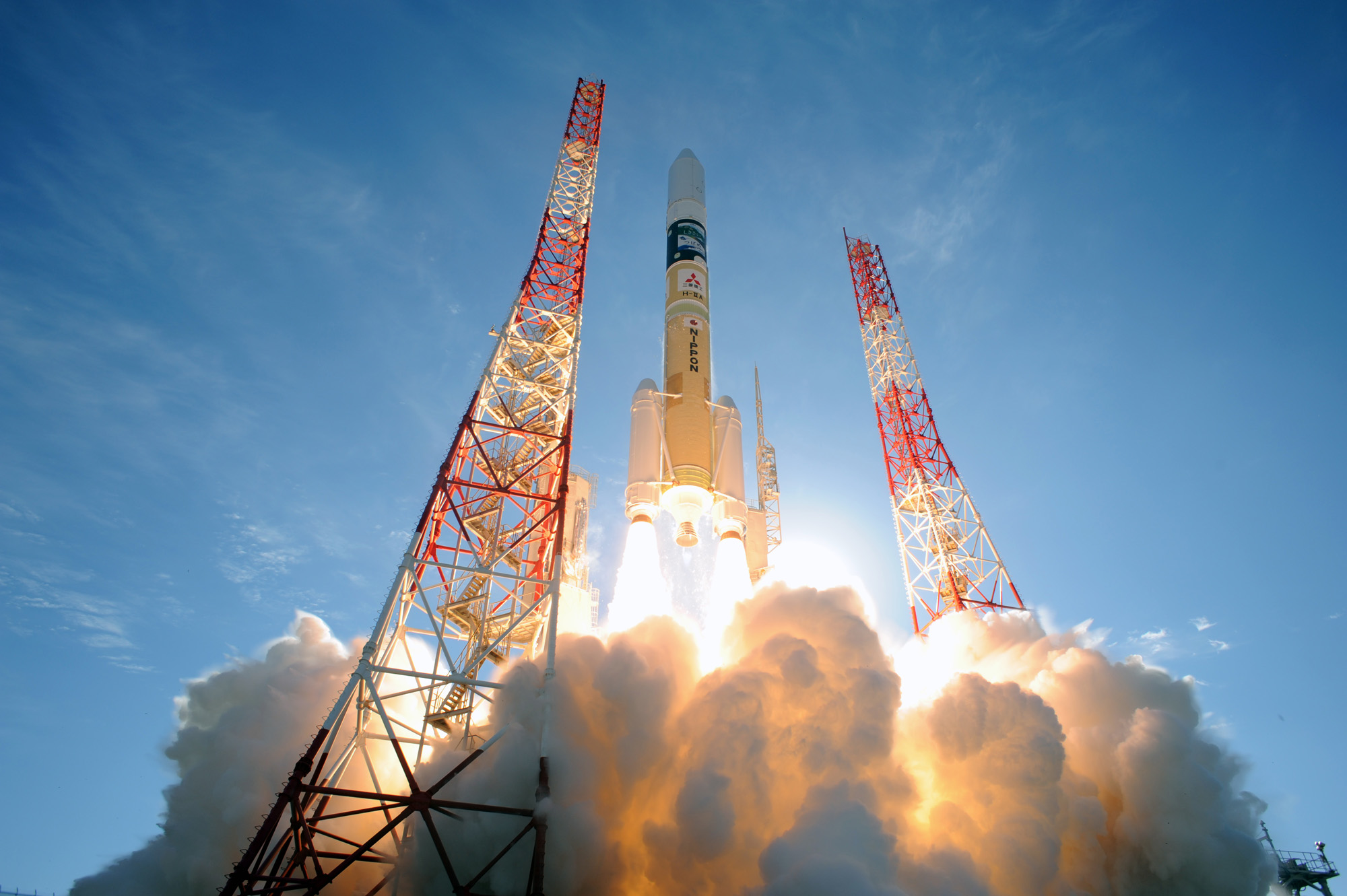Japanese Rocket Launches Two Satellites Into Orbit
The Japan Aerospace Exploration Agency launched two satellites into space Friday (Dec. 22) on separate missions to study the Earth and test new ion engine technology.
A JAXA H-2A rocket launched from the Tanegashima Space Center in southern Japan carrying the Global Change Observation Mission-Climate (GCOM-C) satellite and the Super Low Altitude Test Satellite (SLATS). Liftoff occurred at 8:26 p.m. EST (0126 GMT) on Friday, though the local time was 10:26 a.m. Saturday Japan Standard Time.[Earth from Space in 2017: DigitalGlobe's Most Impactful Photos]

The GCOM-C satellite, nicknamed Shikisai (which means "Color" in Japanese), is an Earth-observing satellite designed to be the first in a pair to monitor Earth's climate from space over 15 years. It carries instruments to study Earth's carbon cycle, clouds, aerosols, ocean color, vegetation, and snow and ice, according to a JAXA mission description.
"GCOM is expected to play an important role in monitoring both global water circulation and climate change, and examining the health of Earth from space," JAXA officials wrote.
The SLATS satellite (nicknamed Tsubame, or "Swallow") is on a technology demonstration mission to test how ion engines could help keep satellites aloft in "super low orbits" below 186 miles (300 kilometers).
"This orbit is an undeveloped region and it has yet to be fully utilized by satellites," JAXA officials wrote in mission overview. "Satellites in a super low orbit will bring benefits such as high-resolution observations for optical imagers, low power transmissions for active sensors, and cost reductions for satellite manufacturing and launches."
Such a low orbit will subject SLATS to 1,000 times the atmospheric drag on satellites in higher orbits between 372 and 497 miles (600-800 km), JAXA officials said. Even the International Space Station is in a higher orbit of about 248 miles (400 km).
Get the Space.com Newsletter
Breaking space news, the latest updates on rocket launches, skywatching events and more!
"In order to solve the atmospheric drag issue, JAXA has adopted an ion engine," JAXA officials wrote. "The ion engine uses fuel 10 times more efficiently than gas jets. Furthermore, we are developing a compact satellite to minimize air resistance, and will verify that our technology can support orbiting at super low altitudes over an extended period of time."
JAXA's successful satellite launch on Friday came just over one minute before another rocket launch.
The U.S. spaceflight company SpaceX launched a Falcon 9 rocket carrying 10 Iridium Next communications satellites into orbit from Vandenberg Air Force Base in California. The launch created dazzling views for spectators across Southern California.
Email Tariq Malik at tmalik@space.com or follow him @tariqjmalik and Google+. Follow us @Spacedotcom, Facebook and Google+. Original article on Space.com.
Join our Space Forums to keep talking space on the latest missions, night sky and more! And if you have a news tip, correction or comment, let us know at: community@space.com.

Tariq is the Editor-in-Chief of Space.com and joined the team in 2001, first as an intern and staff writer, and later as an editor. He covers human spaceflight, exploration and space science, as well as skywatching and entertainment. He became Space.com's Managing Editor in 2009 and Editor-in-Chief in 2019. Before joining Space.com, Tariq was a staff reporter for The Los Angeles Times covering education and city beats in La Habra, Fullerton and Huntington Beach. In October 2022, Tariq received the Harry Kolcum Award for excellence in space reporting from the National Space Club Florida Committee. He is also an Eagle Scout (yes, he has the Space Exploration merit badge) and went to Space Camp four times as a kid and a fifth time as an adult. He has journalism degrees from the University of Southern California and New York University. You can find Tariq at Space.com and as the co-host to the This Week In Space podcast with space historian Rod Pyle on the TWiT network. To see his latest project, you can follow Tariq on Twitter @tariqjmalik.









